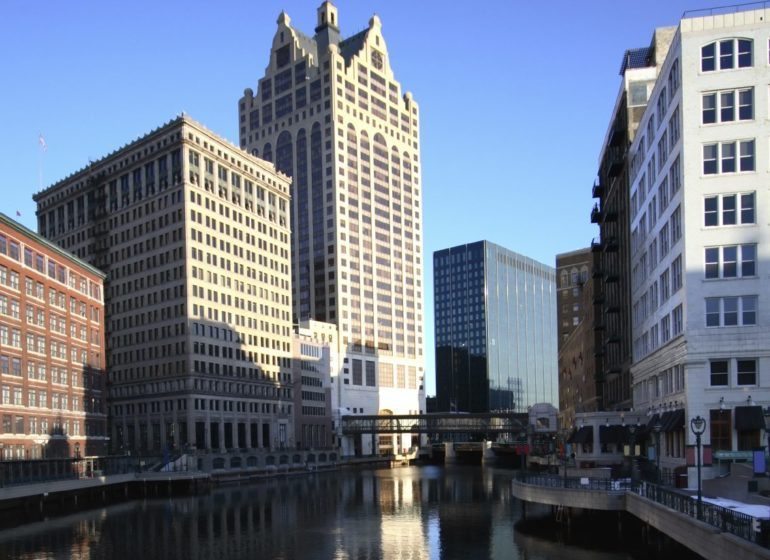Downtown Milwaukee is one of the most dense central business districts of major cities in the United States, according to a new report from Commercial Cafe that studied available land in the downtowns of 25 cities.
“One may reasonably expect the largest, busiest cities to have maxed out their infill potential,” a summary of the report states. “And, while Los Angeles and Washington D.C. do closely fit the bill, having less undeveloped urban land than Chicago and NYC, our research shows that the densest U.S. urban cores are actually Tampa, Fla., Sacramento, Calif., Buffalo, N.Y., Kansas City, Mo. and Milwaukee, Wis. Wisconsin’s Brew City has been the most active of the five in terms of urban core development, which was not (been) held back by the relatively stable population count since 2010—developers have built just over 2 million square feet of new office (76%) and residential (24%) property in downtown Milwaukee since 2013.”

According to Commercial Café, a Santa Barbara, Calif.-based commercial real estate information services provider, downtown Milwaukee has 8.57 acres of development potential and has had 2.1 million square feet of construction delivered since 2013.
Milwaukee’s vacant development potential is on par with Washington D.C., which has 8.9 acres available.
Downtown Milwaukee has less developable land available than the downtowns of Cincinnati and Indianapolis, according to the study.
In downtown Milwaukee, the study, which was conducted from January through April 2018, found there is 472,914 square feet of office space under construction; 531,600 square feet of office space planned and 280,511 square feet of prospective office space.
These projects include the 379,400-square-foot BMO Harris tower that Irgens is building at 770 N. Water St. and the 94,000-square-foot headquarters building for Hammes Company, which is under construction at 210 E. Knapp St.
On the residential side, the study found there are 566 units currently under construction downtown.
Nationwide, the study found there are 584 acres of undeveloped land in the country’s 25 largest downtown areas, the equivalent of 442 football fields.
Cities in the south and southwest including Dallas and Las Vegas have the largest tracts of undeveloped land, while cities in the east, including Tampa, are the densest.
Urban construction in recent years has failed to address the needs of people, according to the study, which had 82 people surveyed saying their city needs more homeless shelters and affordable housing.
Sustainable urban transportation including more walkable neighborhoods, car pool lanes, and infrastructure upgrades were also top improvements respondents wanted to see. Milwaukee residents responding to the survey ranked fixing roads as more important than improving walkability.
The study of each city’s central business district was based on nationwide surveys of people living or working in the 25 cities. Commercial Café also compiled Yardi Matrix and PropertyShark data, as well as online government records to determine the amount of land that currently remains undeveloped in the central business districts of 25 American cities.
The data set sums up all of the parcels with buildings of at least 15,000 square feet. Information on prospective, planned, or current construction and the numbers reflect total office square footage and total residential units as of February 2018.


